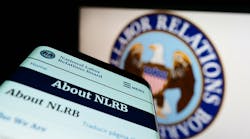Readers tell me they’re concerned about finding people to work in their facilities. And for good reason. By 2010, there will be a 10 million worker shortfall, according to John Nofsinger, chief executive officer of the Material Handling Industry of America.
Though technology and automation can help ease the worker shortage, “you can’t automate everything,” they say.
That got me thinking about the relationship between technology and people. We often think in terms of black and white; it’s either technology or people. I wonder if there is another way. Can technology help recruit and retain humans?
Let’s consider voice recognition, a technology used for just about everything from picking and putaway to replenishment and receiving. Vendors claim the hands-free, eyesfree technology boasts extremely high accuracy rates.
In 2005, supply chain operational consultant David Goomas and Dr. Timothy Ludwig, professor of psychology at Appalachian State University, set out to verify those claims with an academic study. The pair deployed voicedirected picking in a Pep Boys distribution center in San Bernardino, Calif. While realworld accuracy rates of voice systems were slightly lower (99.8%) than those typically claimed (up to 99.9%), there was a more unexpected result.
“People were excited about it,” says Goomas. “Associates said they would never go back to paper.” Pep Boys awarded incentives, so many employees got bonuses. “While pay was the main driver attracting employees,” Goomas continues, “once they were in the door, we stood a better chance of retaining employees if they were on voice.”
Scott Yetter, president and chief executive officer of Voxware, sees it the same way. “One of the challenges of implementing technology is a misalignment of benefits,” says Yetter. “Oftentimes, management gets the benefit at the expense of the worker.” Voice seems to benefit employees as well as management. “That sends a different message to workers,” he says.
Randy McConnell, director of information systems with Smith Drug Co., a pharmaceutical distributor in Spartanburg, S.C., has seen positive changes since the adoption of Vocollect’s voice-directed distribution product. “Voice has been a real value-add in our employee recruitment and retention efforts,” he says.
And, Bryan Gill, warehouse supervisor at a Dunkin’ Donuts distribution center in Westampton, N
.J., started picking with Voxware voice technology before he was promoted to supervisor in 2005. Now, he does the hiring. “When we walk people through the warehouse for their interviews, I show them the voice system, and they are really excited about getting on it,” says Gill.
Why the attraction? For a possible theory, we turn to psychology. The youngest generation to enter the workforce—the Millennials— carry smartphones and iPods. They Google things. They can’t imagine how the world ever got along without computers.
Besides being tech savvy, Millennials are also diverse. “Never before has there been a workforce and workplace so diverse in race, gender and ethnicity,” says David Remson, business consultant at Triangle Consulting. And, most voice systems can accommodate multiple languages.
There are nearly as many Millennials in the workforce (75 million) as there are soon-toretire baby boomers (76 million), according to Remson.
As workforce demographics change, we’ll have to consider more technology and automation. We’ll have to consider psychology. And, we’ll have to answer this question: Should we look to technology to enhance, rather than replace, the human touch?




